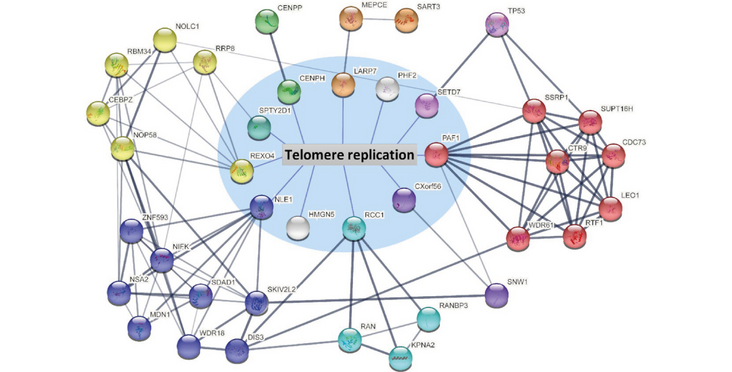The Ligner lab developed a method called QTIP-iPOND (Quantitative Telomeric chromatin Isolation Protocol followed by isolation of Proteins On Nascent DNA) which allowed them to characterize the human telomere proteome during replication. Their results were published in an article in Nucleic Acids Research entitled "The human telomeric proteome during telomere replication".
Abstract
Telomere shortening can cause detrimental diseases and contribute to aging. It occurs due to the end replication problem in cells lacking telomerase. Furthermore, recent studies revealed that telomere shortening can be attributed to difficulties of the semi-conservative DNA replication machinery to replicate the bulk of telomeric DNA repeats. To investigate telomere replication in a comprehensive manner, we develop QTIP-iPOND - Quantitative Telomeric chromatin Isolation Protocol followed by isolation of Proteins On Nascent DNA - which enables purification of proteins that associate with telomeres specifically during replication. In addition to the core replisome, we identify a large number of proteins that specifically associate with telomere replication forks. Depletion of several of these proteins induces telomere fragility validating their importance for telomere replication. We also find that at telomere replication forks the single strand telomere binding protein POT1 is depleted, whereas histone H1 is enriched. Our work reveals the dynamic changes of the telomeric proteome during replication, providing a valuable resource of telomere replication proteins. To our knowledge, this is the first study that examines the replisome at a specific region of the genome.
Read the Publication in Nucleic Acids Research (Open Access)
Abstract, figure and title from Lin, Näger (2021) Nucleic Acids Research published under a CC BY-NC 4.0 license.
